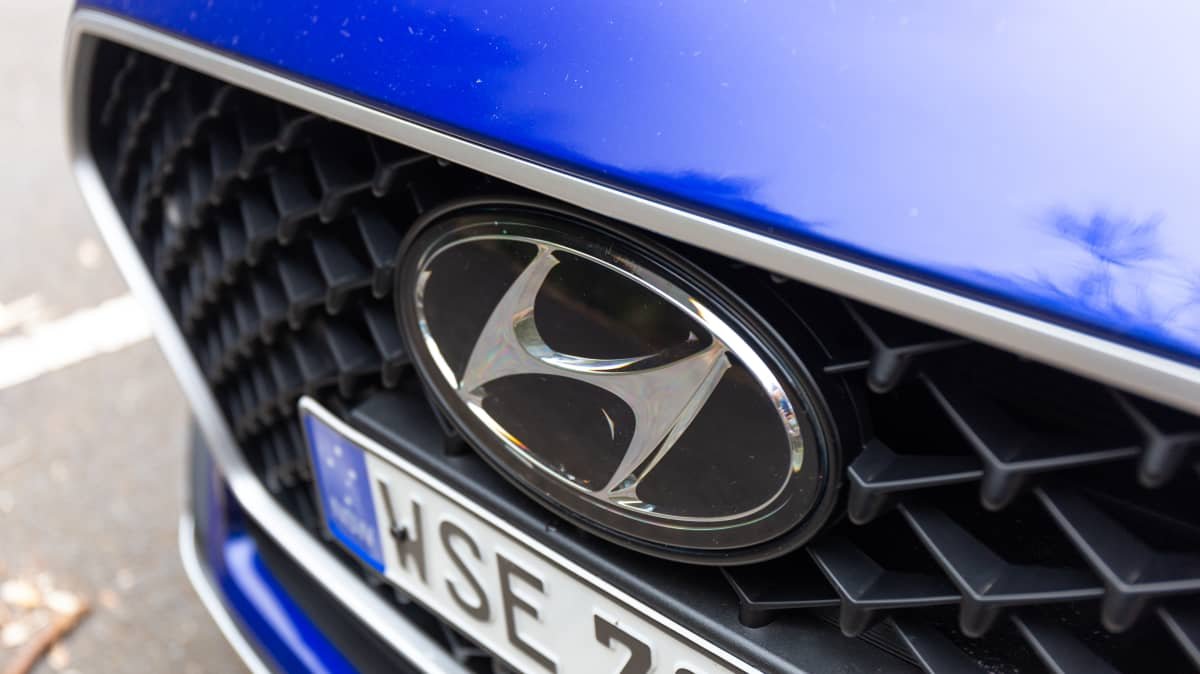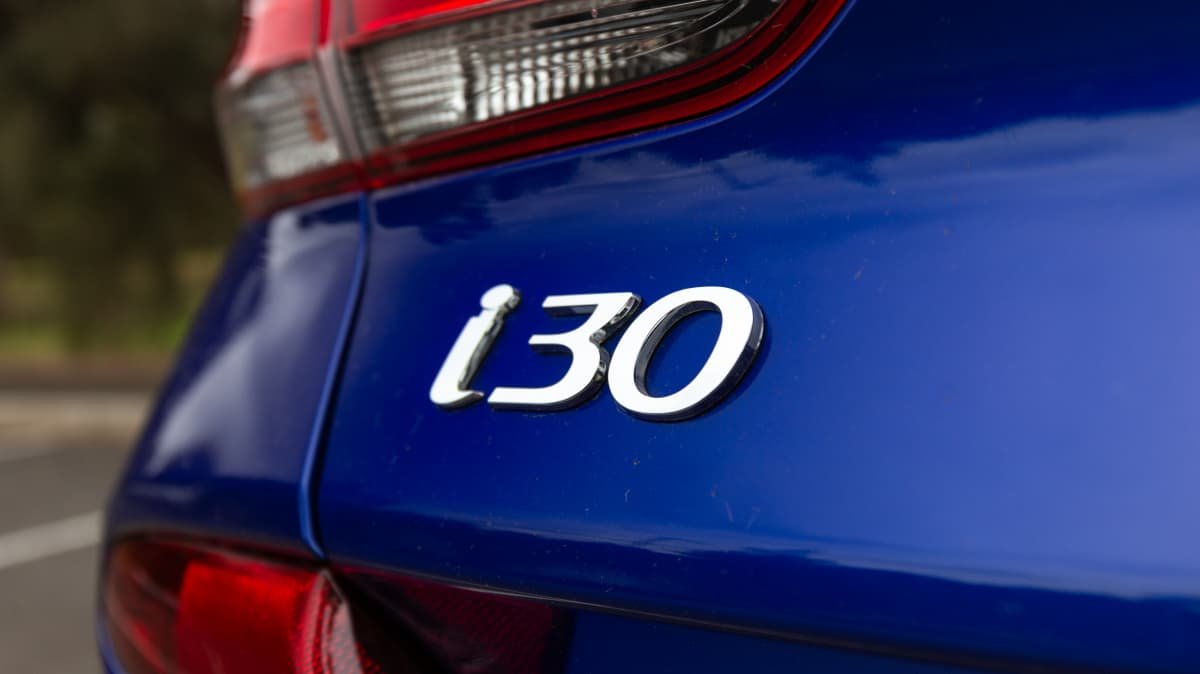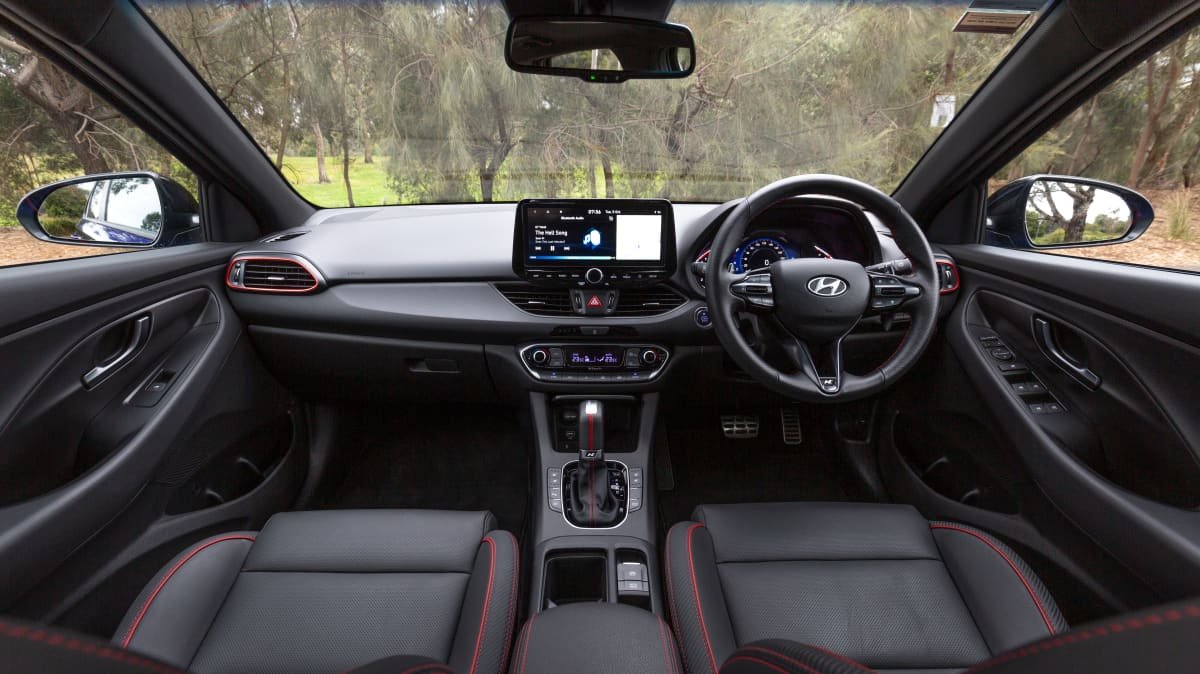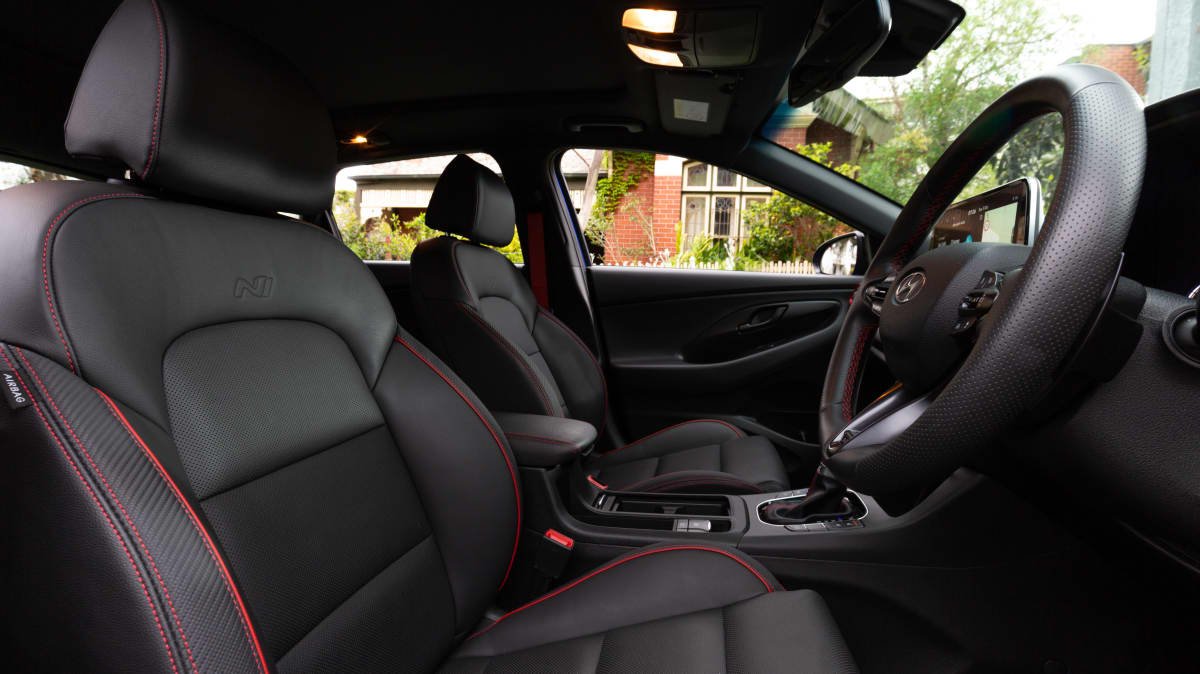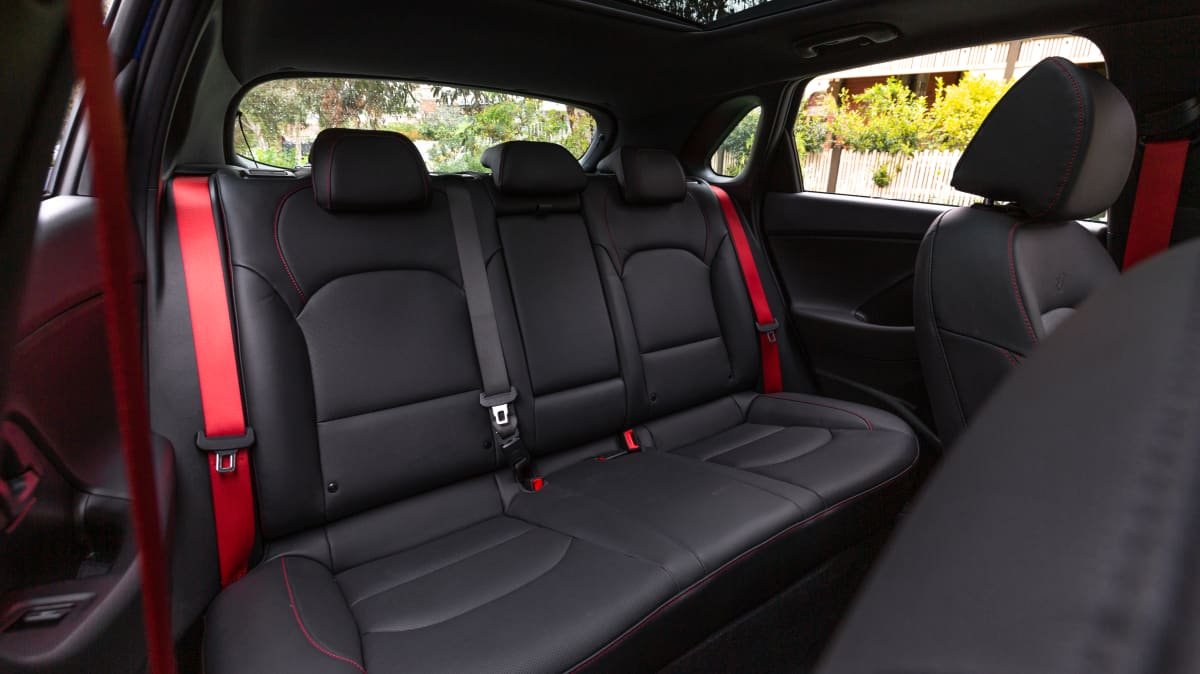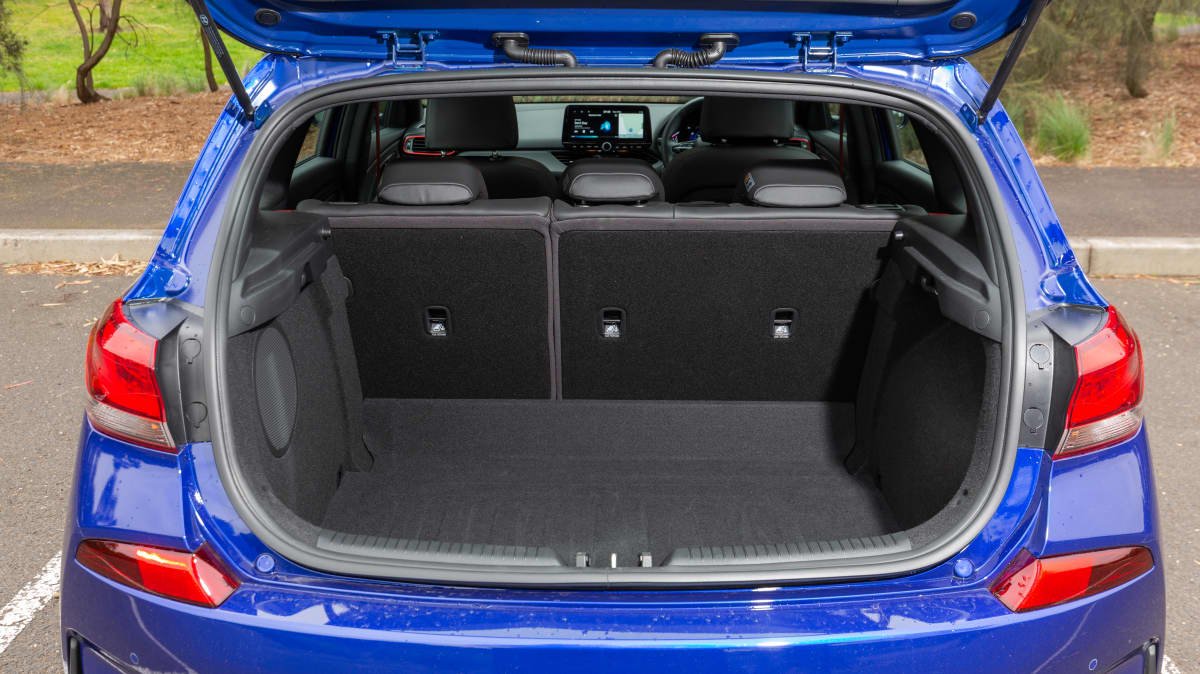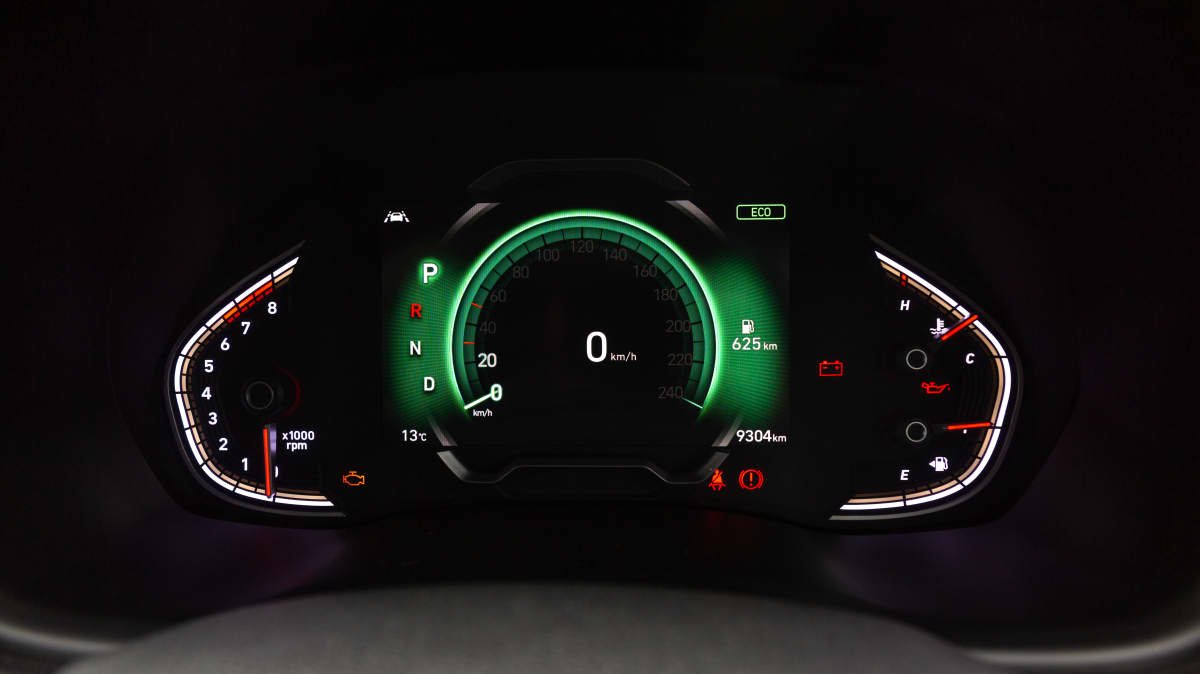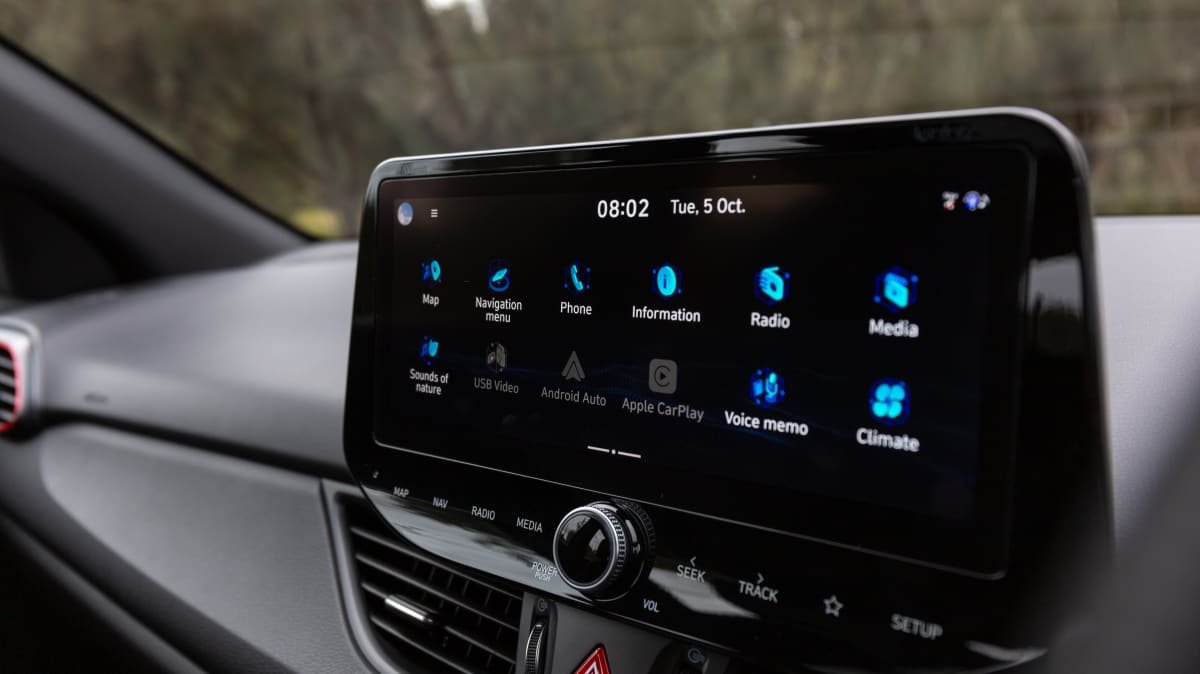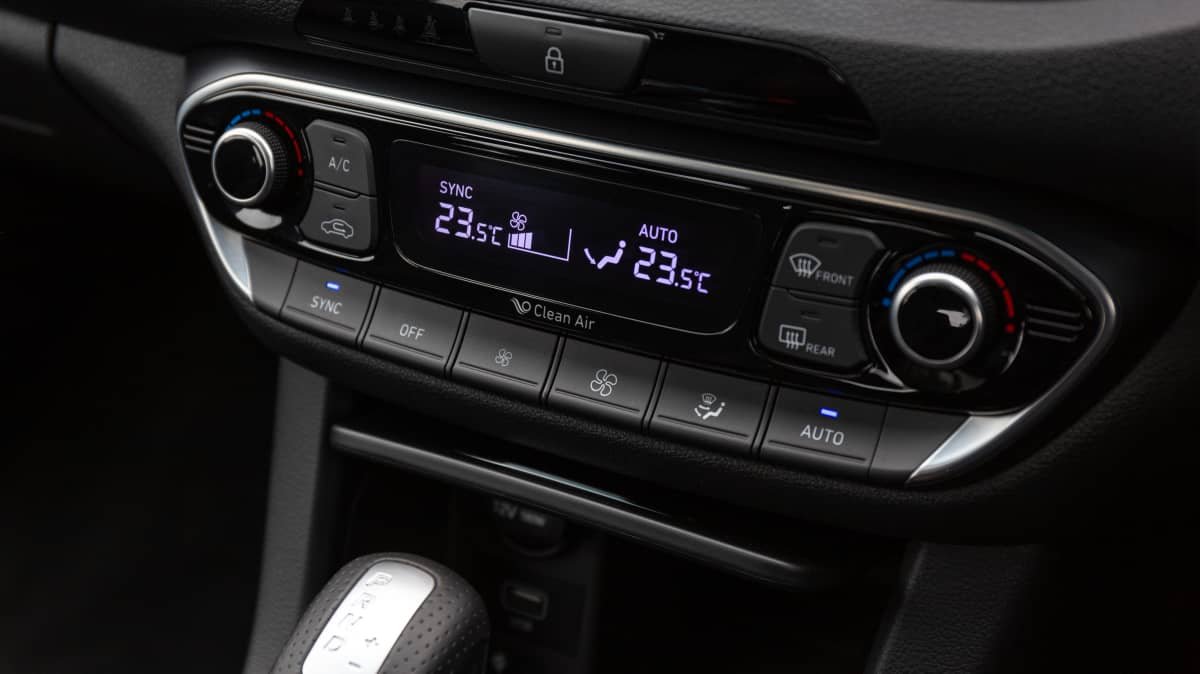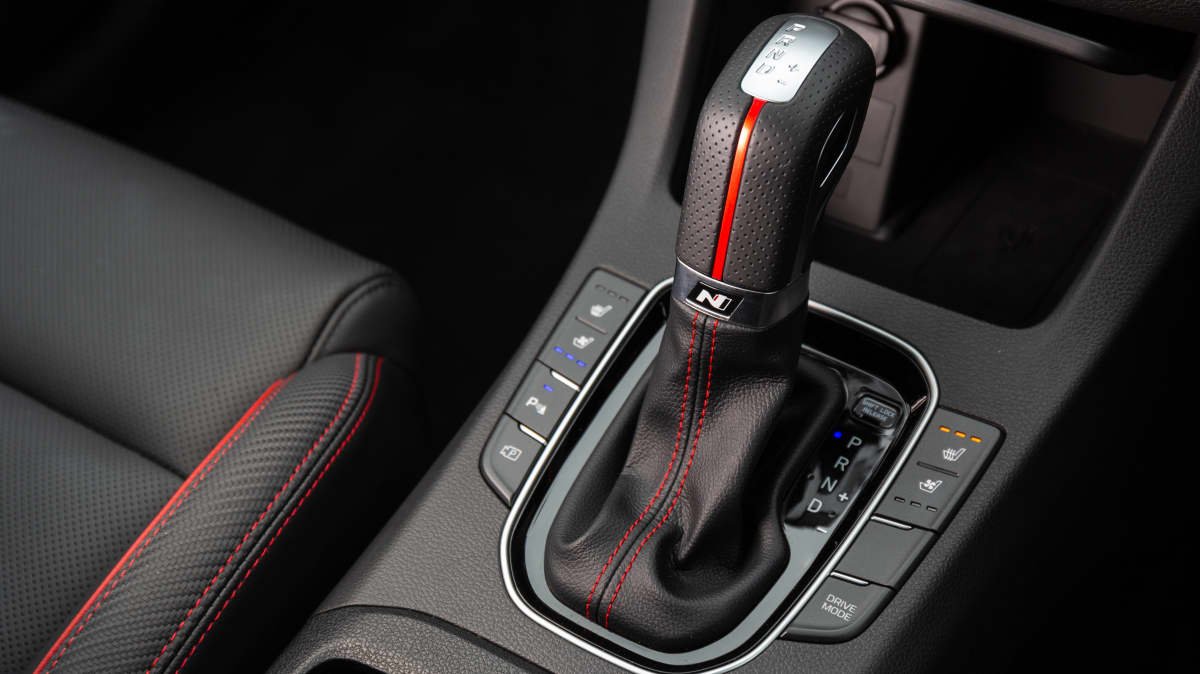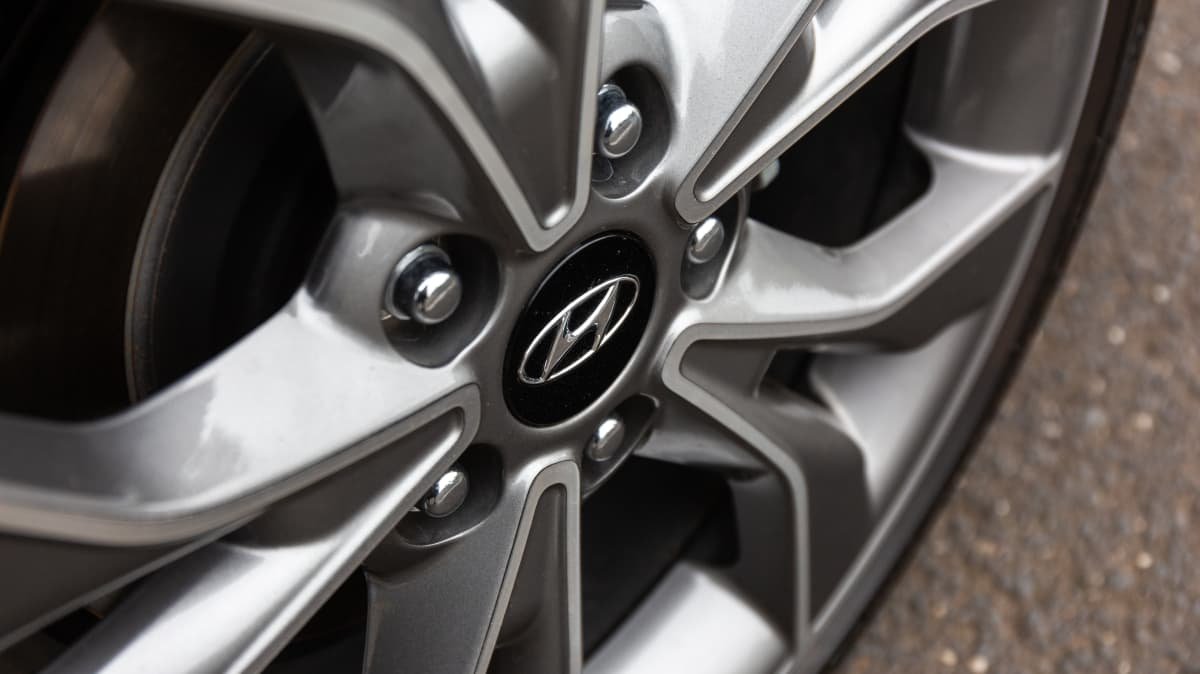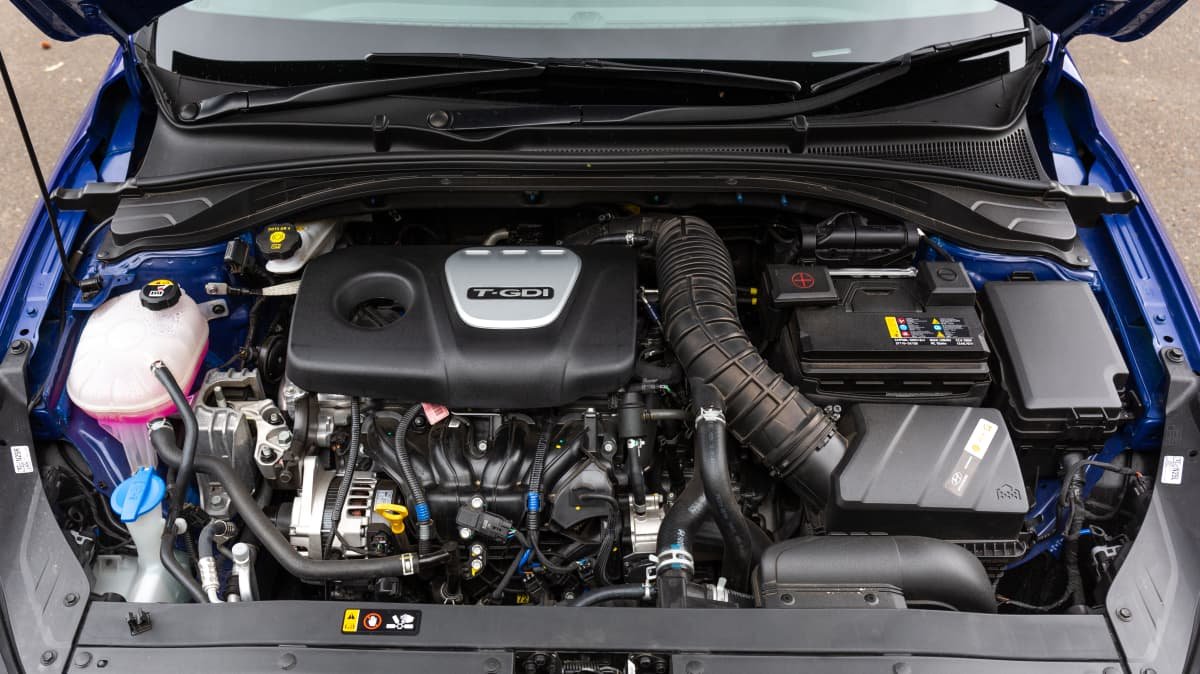[bsa_pro_ad_space id=14]
- Doors and Seats
- Engine
- Engine Power
- Fuel
- Manufacturer
- Transmission
- Warranty
- Ancap Safety
Hyundai’s i30 N hot hatch may have stolen the limelight, but for anyone after the look – and at least part of the performance – in their Hyundai hatchback, the i30 N Line Premium delivers.
- Fun, balanced handling
- Packaging keep back seat and boot use in mind
- Comprehensive equipment list
- Dash design showing its age
- Missing blind spot and cross traffic alerts
- Misses out on exterior updates of cheaper models
As one of the mainstays of Australia’s small car segment, the 2021 Hyundai i30 range offers a little bit of something for everyone, from cheap runabouts to hot hatch heroes.
Second only to the Corolla in sales, the i30 includes – for the first time – sedan and hatch variants. The edgy sedan is a new design, but for now the hatch is an updated version of a model available since 2017.
In the case of the 2021 Hyundai i30 N Line Premium hatch, the updates may not appear at first glance – externally there’s not much to set the new model apart, but inside the changes are more pronounced.
Sitting just below the i30 N hot hatch hero, the i30 N Line Premium starts from $34,220 plus on-road costs base price – a comfy $10K under the i30 N, and just under $11K more than a base i30 – all when equipped with a manual transmission.
The more popular option, a seven-speed dual-clutch automatic, adds $2000 to the price. Opting for one of the available premium paint finishes, like the Intense Blue seen here, adds another $495.
As far as options go, though, that’s it. The i30 N Line Premium hatch is otherwise standard with a full swag of equipment (more in a moment) – of particular note, though, are the sporty exterior styling cues.
Gloss-black mirrors, 18-inch alloy wheels, N design front and rear bumpers, a mesh grille, black bezel LED headlamps, and partial LED tail-lights all help set the N Line apart from other members of the i30 range.
In a similar vein, sport styled and warm hatch models like the closely related Kia Cerato GT, Mazda 3 G25 GT, or the Skoda Scala Monte Carlo might also fall on your consideration list – falling into a similarly sporty niche with close mid-$30K pricing.
| Key details | 2021 Hyundai i30 N Line Premium |
| Price (MSRP) | $36,220 plus on-road costs |
| Colour of test car | Intense blue |
| Options | Metallic paint – $495 |
| Price as tested | $36,715 plus on-road costs ($40,867 drive-away, Melbourne) |
| Rivals | Toyota Corolla | Mazda 3 | Skoda Scala |
As one with the lot, the i30 N Line Premium carries a long list of standard equipment.
Leather-appointed seats, steering wheel and gear selector, N Line front sport seats, dual-zone climate control, keyless entry and start, and wireless phone charging are all along for the ride.
Setting the N Line Premium apart from other models in the range are exclusive features like a powered driver’s seat, heating and ventilation for the front seats, solar-control window glass, a panoramic sunroof, and a self-dimming interior mirror.
The exterior may be dressed up in activewear, but inside there are plenty of items to pamper occupants.
Get a great deal today
Interested in this car? Provide your details and we’ll connect you to a member of the Drive team.
With a relatively tall and upright roof line, compared to swoopier hatches like the Mazda 3 or Toyota Corolla, the i30 provides useful space for adult occupants, both front and rear.
While the front seats have a sporty profile and additional bolstering, they’re still roomy enough for freedom of movement. Rear seat passengers get a more traditional bench seat, with flash red seatbelts, and rear ventilation outlets.
As nice as it is inside, the interior presentation feels a little off the pace. The interior is certainly well-built and feels sturdy, but looks a touch dated. All the more so when you place the i30 hatch alongside its fresher sedan counterpart.
The way the infotainment screen sticks out, and the clunky digital display integration, feels like a bit of a rushed effort.
Boot space is a decent 395L to the rear seats, or 1301L with the rear bench folded. Under the boot floor is a space-saver spare tyre.
| 2021 Hyundai i30 N Line Premium | |
| Seats | Five |
| Boot volume | 395L seats up / 1301L seats folded |
| Length | 4345mm |
| Width | 1795mm |
| Height | 1453mm |
| Wheelbase | 2650mm |
Infotainment and Connectivity
The driver faces a 7.0-inch partial digital instrument cluster, and infotainment is delivered by a 10.25-inch touchscreen.
Within there’s access to AM/FM/DAB+ radio, Bluetooth connectivity, wired Apple CarPlay and Android Auto, and inbuilt satellite navigation. A seven-speaker Infinity sound system delivers your tunes – but it could stand to be a bit punchier.
The system is quite simple to understand. The graphics look modern, and there’s no real lag or extended loading times if you jump from menu to menu.
The Hyundai i30 hatch range carries a five-star ANCAP safety rating dating back to 2017.
Safety gear for the N Line Premium includes seven airbags, a rear-view camera, tyre pressure monitoring, front and rear parking sensors.
Under the Hyundai SmartSense label, the i30 includes autonomous emergency braking with both pedestrian and cyclist detection, lane-keep assist, and driver attention monitoring.
Perhaps a little oddly, the N Line and N Line premium miss out on blind spot monitoring, rear cross traffic alert, and safe exit warning (available on the i30 Elite) which feel like features the N Line Premium, at least, should get. Hyundai blames the vehicle’s (older) design for not being able to accommodate the required hardware.
| 2021 Hyundai i30 N Line Premium | |
| ANCAP rating | Five stars (tested 2019) |
| Safety report | Link to ANCAP |
While the i30 may appear largely unchanged from the outside, in N Line Premium trim it’s not featured like an out of date vehicle. There’s plenty of equipment loaded in, and some feature rivals just can’t match for the price.
Hyundai offers a five year, unlimited kilometre warranty. Capped price servicing is also available, at $299 per visit for the first five 12 month or 10,000km service intervals.
Claimed fuel consumption is 7.1 litres per 100km, with 91-octane regular unleaded suitable. On test we recorded 9.4L/100kmm from a week largely spent within the confines of metro Melbourne, with only a couple of quick freeway jaunts.
| At a glance | 2021 Hyundai i30 N Line Premium |
| Warranty | Five years / unlimited km |
| Service intervals | 12 months / 10,000km |
| Servicing costs | $897 (3 years) | $1495 (5 years) |
| Fuel cons. (claimed) | 7.1L/100km |
| Fuel cons. (on test) | 9.4L/100km |
| Fuel type | 91-octane petrol |
| Fuel tank size | 50L |
With a 1.6-litre four-cylinder turbo petrol engine under the bonnet, and 150kW/265Nm outputs, the N Line Premium sits neatly between the 120kW non-turbo 2.0-litre base i30, and the 206kW i30 N hero.
Warm hatch positioning feels about right for this one too. It’s sensible enough to handle the daily grind, but if you do find yourself on a more exciting piece of road, it’s not out of its depth either.
There’s not a heap of character from the engine around town, and arguably, where you’d like things to simply be point-and-shoot, that’s not a bad thing. It’s got enough torque in reserve to duck in and out of fast-flowing traffic too.
The seven-speed dual clutch automatic isn’t the newest kid on the block. Where the more sophisticated control of Hyundai’s newer eight-speed DCT in cars like the i30 N, Sonata and Santa Fe makes for smoother and more seamless low-speed manoeuvering, the i30 still has some minor rough edges.
It’s not enough to make driving a chore, but from time to time you can catch the car unsure of how to tackle a low speed reverse park up a hill, or caught momentarily between gears as you roll to a slow, but then jump back on the accelerator.
Without going overboard, the handling package feels suitably sporty, nimble and agile. The ride is buttoned down and firm, without being bone jarring.
The odd sharp-edged pothole will crash through, but most of the time the i30 N Line is decently well-mannered around town.
Even things like road noise, often a bugbear of cars that skirt the performance spectrum, is well managed here. The Michelin Pilot Sport 4 tyres fitted here aren’t an aggressive performance tyre, but nor are they a cheap and grilless economy tyre.
Couple the focussed ride and handling, with some decently weighted steering, and the i30 N Line Premium is a much more engaging car on the right stretch of road than you might expect.
| Key details | 2021 Hyundai i30 N Line Premium |
| Engine | 1.6-litre four-cylinder turbo petrol |
| Power | 150kW @ 6000rpm |
| Torque | 295Nm @ 1500-4500rpm |
| Drive type | Front-wheel drive |
| Transmission | Seven-speed dual-clutch automatic |
| Power to weight ratio | 104.5kW/t |
| Weight | 1436kg |
| Tow rating | 1300kg braked, 600kg unbraked |
| Turning circle | 10.6m |
With space and practicality on its side, sport styling that doesn’t bring too many performance-focussed compromises, and an engine with some extra urge to play with, Hyundai’s warm hatch presents plenty to like.
No, the N Line cars can’t match full-blood N performance models, nor are they intended to.
With plenty of equipment, and strong value built in, the Hyundai i30 may not be the most modern hatchback available, but it still checks a lot of boxes when it comes to driver enjoyment.
[bsa_pro_ad_space id=15]




